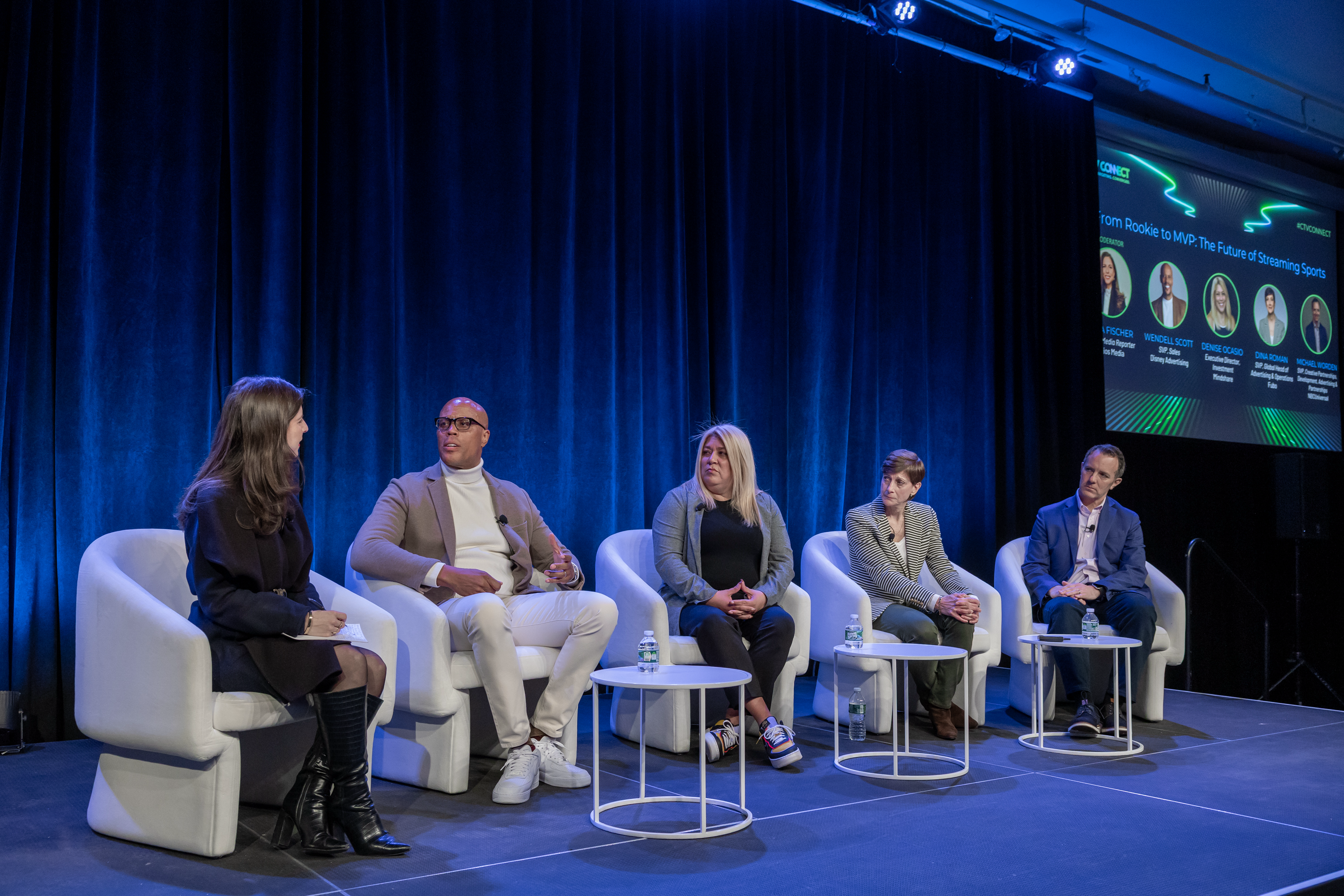Capturing live sports is the white whale for CTV streamers.
Live sports broadcast rights are the surest bet for streamers to grab market share and reach audiences that are watching TV at the same time, rather than binging hand-picked shows on demand. Not to mention recent changes in the national sports zeitgeist – like the rise of women’s sports and the growth of challenger sports like pickleball and Formula 1 – are bringing new, valuable audiences into the mix.
Hence why streamers like NBC, Fubo and Disney-owned ESPN are chasing sports licensing deals. These streamers offered a window into how they view the advertising opportunities in live sports at Cynopsis’s CTV Connect event, which took place in New York City on Wednesday.
Here are a few takeaways.
Ad format flexibility
There’s nothing new about serving ads to live sports audiences, and the experience of buying commercials on linear TV is familiar for most brands and agencies.
But streaming media gives advertisers more flexibility in terms of creative formats and interactive promotions, or controls across multiple touch points and channels, said Wendell Scott, SVP of sales at Disney (owner of ESPN, which has lofty sports streaming ambitions).
“Streaming allows for more than a 15- or 30-second commercial,” Scott said. Advertisers can lean into that time and do something interesting with it, he said, while also reaching audiences with different formats and video lengths in different platforms.

But that flexibility means buyers must include media specialists early on in their campaign planning process, said Denise Ocasio, executive director of investment at Mindshare, who contributed an ad agency perspective alongside the streamers on the panel.
For example, rather than repurposing an existing TV spot for CTV, agencies must design creative in different CTV-friendly cuts and formats, Ocasio said. She pointed out that CTV offers cross-platform opportunities, including activations outside of the main TV screen – say, on social media, for example, or YouTube Shorts – which require vertical video creative.
Digital personalization
Streamers are also looking to capitalize on the behavioral signals captured in digital streaming environments, which aren’t available in linear TV.
For example, Fubo – which is in the process of being acquired by Disney – has a wider look at user viewing behavior because it aggregates content from multiple broadcasters, said Dina Roman, SVP of global ad sales and operations. And because its audience is fully logged in, she added, it’s easier to surface those insights to advertisers.
“We’re able to watch how the consumer moves through our platform, and that throws off a lot of interesting data,” she said.
However, most buyers are aware of the data-driven targeting opportunities available in CTV by now, Mindshare’s Ocasio said. The next frontier is to master creative personalization and new quality metrics like attention measurement and understand how audience engagement ties back to the publisher’s content.
Incremental audiences
Data-driven personalization is one way for streamers to differentiate themselves. But CTV also allows broadcasters to capitalize on brand equity in ways that aren’t available with linear TV, said Disney’s Scott.
Scott was bullish on ESPN’s opportunity to get in front of marketers as a premium brand that’s inexorably linked to sports. ESPN is also creating a new premium audience by launching its first-ever standalone, direct-to-consumer product, set to go live this year, he said.
However, the panel moderator, Axios’ Sara Fischer, seemed to throw the panelists for a loop when she asked how they can ensure that they aren’t cannibalizing their existing audiences by having multiple streaming platforms available in market – some of which are independent and some of which are available as part of larger packages.
For example, Disney will launch what Scott called “ESPN All Access” (an ESPN spokesperson tells Puck sports correspondent John Ourand that the name for the upcoming service is undecided and that execs are using “descriptive placeholders.”). But Disney also already had ESPN+, an exclusive streaming package, in addition to the ESPN linear channel being part of most cable packages.
Rather than worry about ESPN All Access aping the streaming audience of ESPN+, Scott said he felt the bigger challenge was linear TV cannibalizing streaming audiences. Giving consumers multiple direct touch points to access ESPN broadcasts, whatever their preference, is a more sustainable growth path, he suggested. However, he did concede that ESPN+ may become less of a priority for Disney as ESPN All Access gains steam.
From the agency perspective, Ocasio said, it’s likely that new platforms like ESPN All Access will initially be additive on launch. But over the long-term, they will likely cannibalize users from other channels owned by the publisher, she said. It is, in other words, ESPN audiences moving around, not so much new viewers being added to the pool.
Still, she said, dealing with audience fragmentation is “just the nature of CTV.”
















